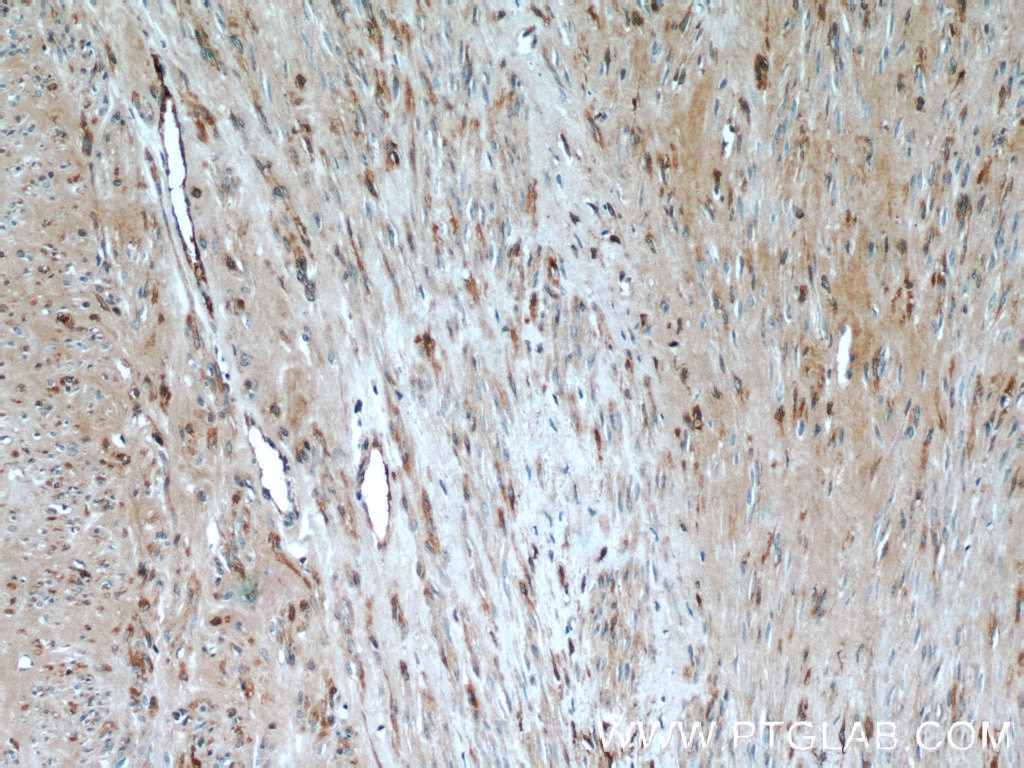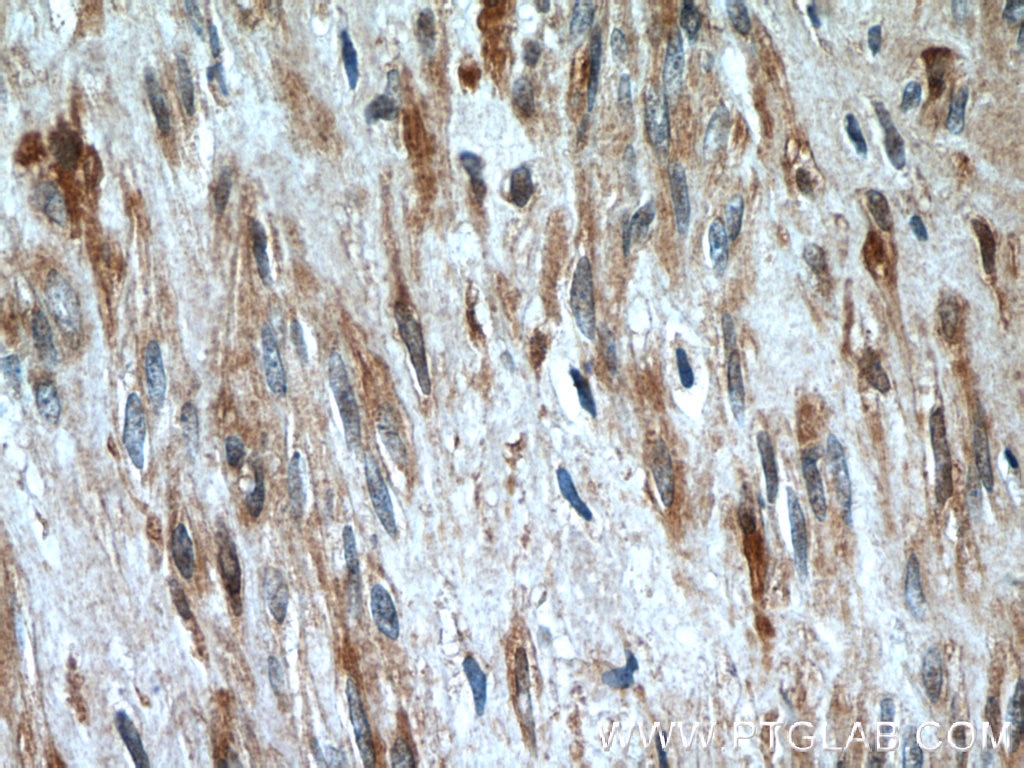- Phare
- Validé par KD/KO
Anticorps Polyclonal de lapin anti-OXTR
OXTR Polyclonal Antibody for WB, IP, IHC, ELISA
Hôte / Isotype
Lapin / IgG
Réactivité testée
Humain et plus (3)
Applications
WB, IP, IF, IHC, ELISA
Conjugaison
Non conjugué
N° de cat : 23045-1-AP
Synonymes
Galerie de données de validation
Applications testées
| Résultats positifs en WB | cellules Jurkat, cellules HeLa, cellules L02 |
| Résultats positifs en IP | cellules L02 |
| Résultats positifs en IHC | tissu d'hystéromyome humain, tissu de cancer du sein humain il est suggéré de démasquer l'antigène avec un tampon de TE buffer pH 9.0; (*) À défaut, 'le démasquage de l'antigène peut être 'effectué avec un tampon citrate pH 6,0. |
Dilution recommandée
| Application | Dilution |
|---|---|
| Western Blot (WB) | WB : 1:500-1:2000 |
| Immunoprécipitation (IP) | IP : 0.5-4.0 ug for 1.0-3.0 mg of total protein lysate |
| Immunohistochimie (IHC) | IHC : 1:20-1:200 |
| It is recommended that this reagent should be titrated in each testing system to obtain optimal results. | |
| Sample-dependent, check data in validation data gallery | |
Applications publiées
| KD/KO | See 3 publications below |
| WB | See 9 publications below |
| IHC | See 9 publications below |
| IF | See 6 publications below |
| IP | See 1 publications below |
Informations sur le produit
23045-1-AP cible OXTR dans les applications de WB, IP, IF, IHC, ELISA et montre une réactivité avec des échantillons Humain
| Réactivité | Humain |
| Réactivité citée | rat, Humain, porc, souris |
| Hôte / Isotype | Lapin / IgG |
| Clonalité | Polyclonal |
| Type | Anticorps |
| Immunogène | OXTR Protéine recombinante Ag19074 |
| Nom complet | OXTR |
| Masse moléculaire calculée | 389 aa, 43 kDa |
| Poids moléculaire observé | 46 kDa, 67 kDa |
| Numéro d’acquisition GenBank | BC137443 |
| Symbole du gène | OXTR |
| Identification du gène (NCBI) | 5021 |
| Conjugaison | Non conjugué |
| Forme | Liquide |
| Méthode de purification | Purification par affinité contre l'antigène |
| Tampon de stockage | PBS avec azoture de sodium à 0,02 % et glycérol à 50 % pH 7,3 |
| Conditions de stockage | Stocker à -20°C. Stable pendant un an après l'expédition. L'aliquotage n'est pas nécessaire pour le stockage à -20oC Les 20ul contiennent 0,1% de BSA. |
Informations générales
Oxytocin (OXT) is a neurohypophysial hormone that plays a role in lactation and parturition and in the central nervous system as a neurotransmitter involved in sex and maternal behavior (PMID: 1852313; 10811917). OXT acts through its receptor, OXTR, which belongs to the G protein-coupled 7-transmembrane receptor family. OXTR is expressed in endometrium, myometrium, mammary gland (PMID: 1313946). This antibody is raised against the C-terminal region of human OXTR. Two immunoreactive OXTR bands were found in the fat tissue, an unglycosylated 43 kDa form and a mature glycosylated 67 kDa form (PMID:32819381).
Protocole
| Product Specific Protocols | |
|---|---|
| WB protocol for OXTR antibody 23045-1-AP | Download protocol |
| IHC protocol for OXTR antibody 23045-1-AP | Download protocol |
| IP protocol for OXTR antibody 23045-1-AP | Download protocol |
| FC protocol for OXTR antibody 23045-1-AP | Download protocol |
| Standard Protocols | |
|---|---|
| Click here to view our Standard Protocols |
Publications
| Species | Application | Title |
|---|---|---|
Acta Physiol (Oxf) Oxytocin modulates neural processing of mitral/tufted cells in the olfactory bulb. | ||
Antioxidants (Basel) ΔMST and the Regulation of Cardiac CSE and OTR Expression in Trauma and Hemorrhage. | ||
Biochem Pharmacol Synergistic antitumor activity of 5-fluorouracil and atosiban against microsatellite stable colorectal cancer through restoring GATA3.
| ||
Front Pharmacol The Role of Formyl Peptide Receptor 1 in Uterine Contraction During Parturition. |










